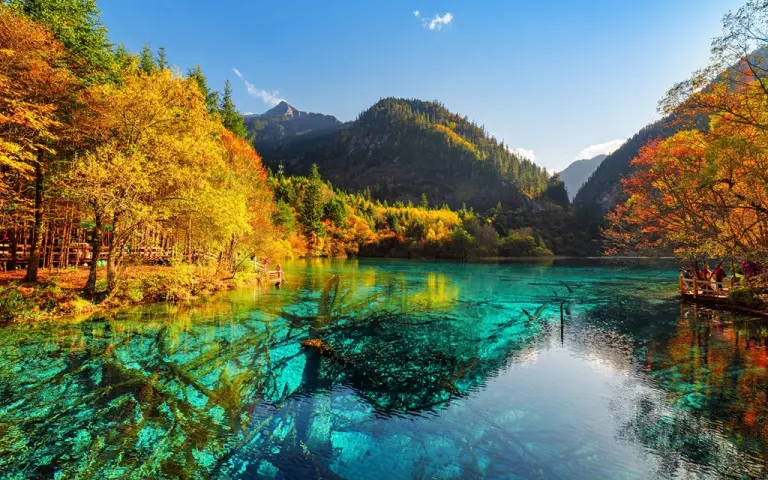Lakes around the world with beautiful colors such as pink, blue or red create attractive landscapes, attracting tourists.
Hillier, Australia
Located near the Pacific Ocean in Western Australia, Lake Hillier appears like a painting of pink hues. Situated on Middle Island, surrounded by sandbanks and eucalyptus forests, the 600-meter-long lake was discovered by Matthew Flinders in 1802. In the early 20th century, it served as a salt mining site due to its salt concentration, comparable to that of the Dead Sea. Today, it’s a captivating tourist attraction.

Peyto, Western Canada
Situated in Banff National Park, Peyto Lake is one of Canada’s most picturesque lakes. Encircled by glaciers over 45 to 125 million years old, the lake was named after Bill Peyto, who discovered it in 1849. Its crystal-clear frozen surface creates stunning reflections under sunlight, making it one of Alberta’s most accessible and breathtaking tourist spots.

Laguna Colorada, Bolivia
Located in southwestern Bolivia, the red-hued Laguna Colorada lies against the backdrop of the Andes, with flamingos wading on its surface. The lake’s red tone originates from sediment and red algae in the water. At an altitude of over 4,200 meters above sea level, the lake also features borax islands and a white pool contrasting with its orange-red surface. Rare Andean flamingos flock here, making it a natural marvel.

Kelimutu, Indonesia
Kelimutu refers to three lakes of varying colors atop a volcano in Kelimutu National Park. The lakes’ hues change unpredictably, ranging from blue, green, and red to white or black. Locals believe the lakes are the resting places for spirits, with the western lake being home to good spirits and the other two for malevolent ones. Visitors can hike around the lakes but should avoid getting too close due to potentially harmful gases.

Chott El Djerid, Tunisia
The largest salt lake in southern Tunisia, Chott El Djerid spans 250 kilometers in a wolf-like shape, with waters ranging from pink to green. It’s a geological haven and also served as a filming location for Star Wars.

Emerald, New Zealand
Located in Tongariro Alpine Crossing National Park, a UNESCO World Heritage Site, the Emerald Lake captivates visitors with its striking turquoise water. The lake’s vibrant hue comes from dissolved minerals that flow from nearby Red Crater volcanoes.

Retba, Senegal
Cape Vert Peninsula in Senegal is home to Lac Rose, or Lake Retba, renowned for its pink water, caused by the bacteria Dunaliella Salina. The lake’s color varies from deep pink to rose petal hues depending on the time of day and sunlight intensity.

Laguna Verde, Bolivia
Another Bolivian wonder, Laguna Verde, lies at the foot of the dormant Licancabur Volcano. Its emerald-green color comes from mineral deposits. Fascinatingly, despite winter temperatures plummeting to -56°C, the lake’s water remains unfrozen.

WuHua Hai, China
Within Zhangjiajie National Park, a UNESCO World Heritage Site since 1992, lies the enchanting Wu Hua Lake. Surrounded by mountains, the 5-meter-deep lake shifts colors from amber yellow to emerald green and sapphire blue. Despite the cold, the lake doesn’t freeze, maintaining a constant water level.

Quilotoa, Ecuador
Quilotoa is a 3-kilometer-wide volcanic crater lake formed centuries ago by a volcanic eruption. The lake, with its mesmerizing green water created by dissolved minerals, is now 250 meters deep and a popular tourist destination.







